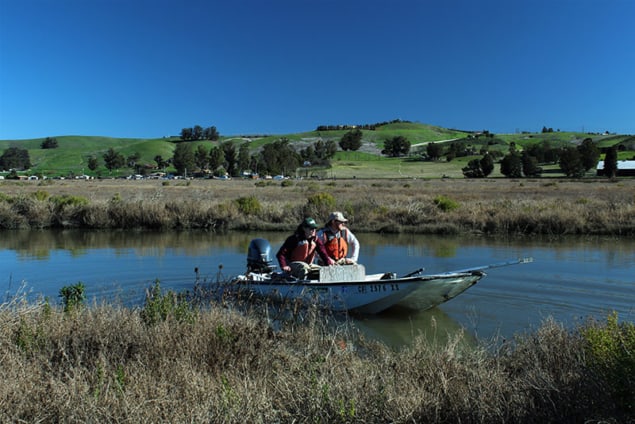
Estuarine wetlands along the US Pacific coast may be at risk of destruction if sea levels rise as much as feared, warns a study in Science Advances. Many such habitats can’t spread inland as they are hemmed in by steep geography or human coastal developments. This makes the region particularly vulnerable to sea-level rise, threatening the endangered species that call the wetlands home.
To make the assessment, Karen Thorne of the US Geological Survey and colleagues from the US and Canada modelled the effect of rising sea-level on 14 estuarine wetlands along the Pacific coast of the continental US.
If the upper estimates of sea-level rise come to pass and levels rise by around 1.5 m, 83% of tidal wetlands are predicted to become unvegetated, the team found. High and middle-height marsh habitats would disappear and only low marshes would survive past 2110. Even with less extreme predictions of sea-level rise, 95% of high and 60% of middle-height marshes look set to disappear.
This pattern differs from the Atlantic coast and Gulf of Mexico, where wetlands can often migrate inland, escaping much of the rise in sea-level. Many Pacific wetlands already occupy the maximum area available, hemmed in as they are by human developments or steep terrain, so rising sea levels will simply inundate the habitat.
The researchers simulated the effect of sea-level rise on 14 individual wetland sites in river estuaries, accounting for current wetland elevation and projections for how much sediment each wetland is set to accumulate in the next century. They simulated low, moderate and high sea-level rise scenarios for each individual site ranging from a rise of 12 cm to a 166 cm increase.
The loss of wetland areas has far-reaching effects for both human and animal communities. Vegetated wetlands in large river estuaries provide protection from storm surges for upriver towns and cities. Wetlands are also important carbon sinks, their plants absorbing greenhouse gases such as carbon dioxide and methane, so their loss threatens to worsen climate change. The habitat is home to many endangered species found only on the Pacific coast, such as the salt marsh harvest mouse and Belding’s savannah sparrow. Many bird species rely on stopovers in wetland areas during their annual migrations, and various fish forage there during at least part of their lives.
While Pacific coast wetlands are clearly under serious threat, the relatively slow sea-level rise projected for the near future provides a chance to save them. Various control measures, such as wetland restoration and “managed retreat” through geoengineering, may help save this valuable habitat. For example, the wetlands in San Francisco Bay already have a management plan. In the face of climate change, this study reveals the potential benefits of such a plan for the whole US Pacific coast.



